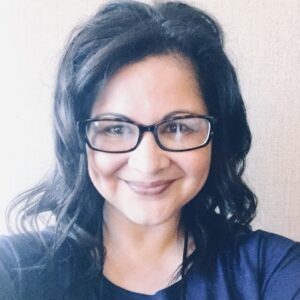Setting the Stage for Language Learner Success Through an Asset-Based Lens
Educators in the TESOL field have defined individuals who are learning English as a second language at various levels of proficiency in different academic settings as English language learners (TESOL, 2018). In addition, the U.S. Department of Education has specified other terms for students who are enrolled in the U.S. school system with a home language other than English and need services from a language instruction educational program to access their school’s curriculum. These terms include Limited English Proficient (LEP) and English Learner (EL), the latter being introduced by the Every Student Succeeds Act (ESSA) in 2015.
A Shift in Terminology
As instructional approaches develop, and better ways to serve these students are implemented, educators continue to advocate for a more asset-based term that represents the value of these students’ home languages and cultures. States such as Rhode Island, Maine, South Carolina, and North Carolina, among many others, have taken the lead in changing the terminology used to refer to this student population. They are shifting away from Limited English Proficient (LEP) or English Learner (EL) and more towards terms such as Multilingual Learners (MLs). The purpose of this change responds to the need to acknowledge students’ home languages and cultures as a strength, as a way to avoid seeing students from a deficit-based lens and to highlight the importance of literacy and proficiency in multiple languages. In addition, this change is aligned with the WIDA ELD Standards Framework as WIDA uses the term MLs to describe “all students who come in contact with and/or interact in languages in addition to English on a regular basis” (WIDA, 2020, p. 11).
Developing an Asset-Based Lens
We celebrate the shift in terminology and invite others to join us in recognizing the power of being multilingual. When educators approach MLs with an asset-based lens, they see the unique value, experiences, and contributions that MLs bring to their school communities. The WIDA Guiding Principles for Language Development outline a set of core beliefs that guide educators in the development of an asset-based approach to supporting MLs and their language development. Here are a few:
- Recognizing and celebrating students’ home languages and cultures.
- Understanding language development and learning with a focus on building academic literacy.
- Advocating for MLs and building relationships with their families.
- Creating a learning environment rich in multiple modes of communication, authentic learning experiences, and opportunities for MLs to use their full linguistic repertoire.
Serving Newcomer Students
Recently arrived students (aka newcomers) are one of the ML subgroups that are most commonly referenced by classroom teachers when they are trying to understand how to serve MLs and plan for their academic and social-emotional success. These are students who have been in the school system for one to three years.
The number of MLs in public schools is significantly increasing every school year. Thus, it’s crucial to assess instructional practices and integrate strategies for growing ML student achievement in ways that capitalize on students’ assets and strengths. Let’s take a look at two of those strategies…
1. Building Families and Community Relationships
It’s critical to create a safe and thriving environment for families so they feel welcome and know that the school values their cultures and home languages. This way, families also partner with educators in their efforts and become active advocates for their children’s education. Best practices to welcome newcomers and create a conducive family engagement environment include:
- Learning about newcomers’ backgrounds, schooling, and family stories to identify specific needs and determine effective action steps.
- Designing pathways in the academic programs that provide newcomers with opportunities to access the curriculum and participate in school activities.
- Communicating constantly in a language and format that families may understand.
- Creating opportunities for families to engage in school activities and feel like valued members of the school community.
2. Integrating Scaffolding Strategies
Newcomers need extra support to access the content and engage in learning. A great strategy to help students access complex grade-level texts is through the use of text sets. Text sets scaffold vocabulary and comprehension instruction while also building language acquisition skills. They provide various entry points and access to content; integrate reading, writing, speaking, and listening; and expose students to a variety of culturally relevant texts that allow students to make connections to different backgrounds, interests, and experiences. Here are a few resources to help you get started:
Let’s Reflect!
- What instructional strategies are you using to promote ML success inside and outside of the classroom?
- What activities could you incorporate into your daily instruction to advocate for MLs and build relationships with their families?






